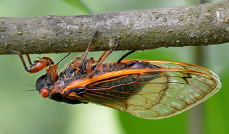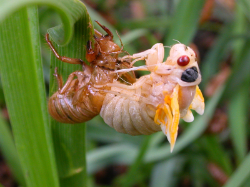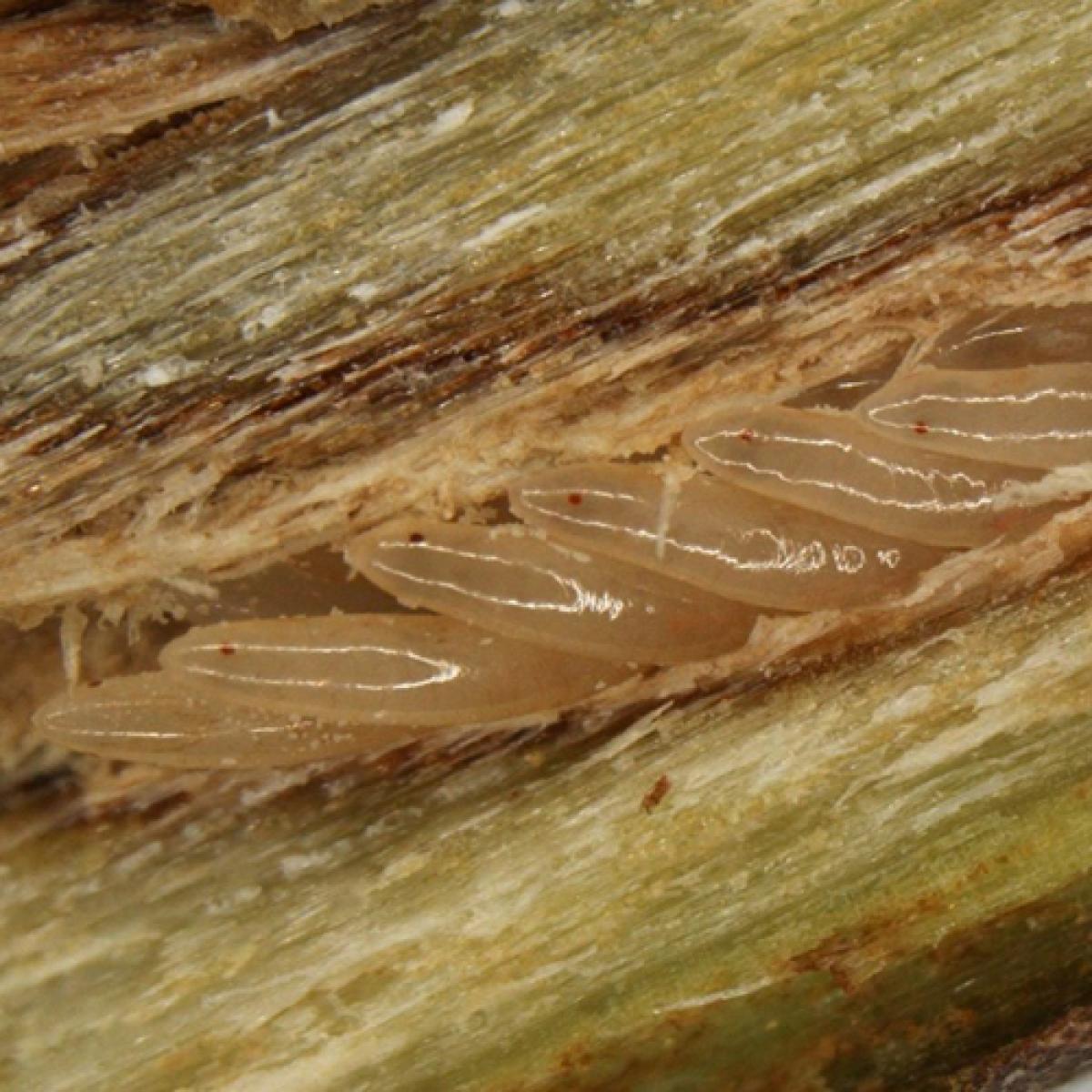Cicada Life Cycle
A female cicada crawls along a tree branch, looking for a thin outer branch. She just mated with a male cicada, and her eggs are ready for laying. She finally finds the perfect spot, a young, tender branch recently sprouted from a larger one. Using a sharp, knife-like structure on her abdomen, she cuts a slit in the soft branch. In this slit, she lays her eggs, and the next generation of cicadas begins to grow.

Early Cicada Life Stages
There are over 3000 cicada species around the world, and most have similar life cycles. Cicada eggs are laid by female cicadas inside small tree branches. Six-eight weeks later, cicada nymphs hatch from the eggs and fall to the ground. A nymph is a baby cicada that looks small, white, and, mushy. They are very light, so they don’t get hurt when they fall. Nymphs have legs for digging, which they use to dig into the ground, staying near the roots of plants. They stay near the roots because that is where they get their food. Nymphs drink fluid from the root xylem. This is the same fluid that we sometimes see coming out of tree trunks as sap.
There are five nymph stages. Cicadas molt their exoskeleton after each one, growing larger each time. Most cicada species grow through their nymph stages over the course of 2-5 years. The exact timing depends on how much food they can get, and how ideal the environment around them is. At the end of their fifth nymph stage, the cicada nymphs burrow out of their underground chambers and climb the closest plant (often a tree). Once they find a good spot, they shed their final exoskeletons, and emerge as adults. They wait a bit more time so their new adult exoskeleton hardens, and then they begin looking for mates.
Adult Cicada Life Stage

Adult male cicadas are very loud singers. They sing so loud to attract a female to mate with. In many places, many cicadas emerge from the ground around the same time, and so become adults and sing at the same time. This is why when the cicadas come out, we hear millions of them at once. The noise they create can be deafening!
After a male and female mate, the female cicada is ready to lay her eggs. Female cicadas have a long, sharp ovipositor which they use to carve a small hole in a small tree branch. Inside this hole, she lays her eggs, and the cicada life cycle begins anew. Soon after the eggs are laid, the adult cicadas begin to die, their bodies littering the forest floor. Their bodies will break down in the soil, which helps feed the plants and the new nymph cicadas that will soon live in the soil.
Additional images via Wikimedia Commons. Cicada eggs close up by Christina Rowe.
Read more about: Rising Cicadas
Bibliographic details:
- Article: The Life of a Cicada
- Author(s): Tyler Quigley
- Publisher: Arizona State University School of Life Sciences Ask A Biologist
- Site name: ASU - Ask A Biologist
- Date published: 23 Jul, 2021
- Date accessed:
- Link: https://askabiologist.asu.edu/cicada-life-cycle
APA Style
Tyler Quigley. (Fri, 07/23/2021 - 12:56). The Life of a Cicada. ASU - Ask A Biologist. Retrieved from https://askabiologist.asu.edu/cicada-life-cycle
Chicago Manual of Style
Tyler Quigley. "The Life of a Cicada". ASU - Ask A Biologist. 23 Jul 2021. https://askabiologist.asu.edu/cicada-life-cycle
Tyler Quigley. "The Life of a Cicada". ASU - Ask A Biologist. 23 Jul 2021. ASU - Ask A Biologist, Web. https://askabiologist.asu.edu/cicada-life-cycle
MLA 2017 Style

Cicada eggs resting in a slit in a tree branch.
Be Part of
Ask A Biologist
By volunteering, or simply sending us feedback on the site. Scientists, teachers, writers, illustrators, and translators are all important to the program. If you are interested in helping with the website we have a Volunteers page to get the process started.

